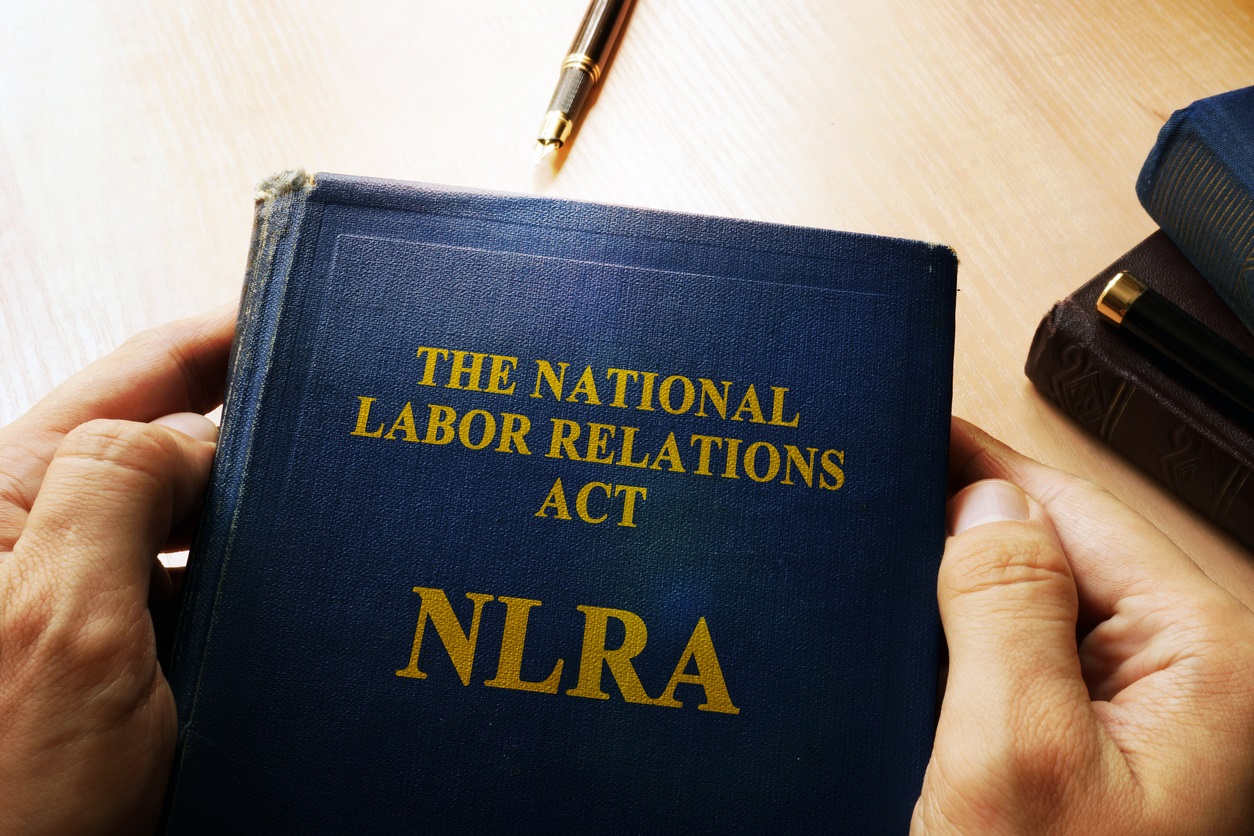It is important for employers to be aware that a recent National Labor Relations Board (NLRB) decision has significantly changed the required response to a union demand to bargain or request for recognition. The Cemex Construction Materials Pacific, LLC v. NLRB case, issued in August 2023, is a dramatic departure from the recognized procedures used for the last 50 years.
Priority Points:
- 14-Day Response Window: Employers now have only 14 days to respond to a labor union’s demand to bargain or request for recognition. This compressed timeframe emphasizes the importance of immediate action.
- Contact Your Attorney Immediately: Upon receiving any communication from a union regarding recognition or bargaining, employers should consult with their labor and employment attorney as soon as possible.
- Broad Communication Methods: Under Cemex, a valid demand to bargain or request for recognition can be made verbally or in writing as long as it clearly indicates a desire to negotiate and bargain on behalf of the employees. This means that seemingly informal communications, such as emails or conversations, could trigger the 14-day response window. Additionally, the demand does not need to be expressed to any particular officer or registered agent of an employer as long as it is communicated to a person “acting as an agent of an employer.” Employers should, therefore, direct their site managers to bring any communications to their attention.
New Standards: Cemex
On August 25, 2023, the National Labor Relations Board issued a momentous decision in Cemex Construction Materials Pacific, LLC., 372 NLRB No. 130 (2023). The 120-page Cemex decision radically changed how the Nation’s workers may become represented by labor unions.
This article focuses specifically on the changes made to labor union demands for bargain, requests for recognition, and the procedures that employers must follow after being presented with any communication purporting to be from a union.
While the Cemex decision resulted from employers engaging in patently unfair labor practices that interfered with a labor union’s election, its reach impacts well-meaning employers as well. The Cemex decisions departs from longstanding precedent on what employers must do with labor requests.
The Prior Framework: Linden
Previously, as outlined by the Supreme Court in Linden Lumber Division, Summer & Co. v. NLRB, 419 U.S. 301 (1974) and its progeny, employers would not commit unfair labor practices nor violate Section 8(a)(1) of the National Labor Relations Act “solely upon the basis of its refusal to accept evidence of majority status other than the results of a Board election.”
To overturn Linden, the Cemex Board emphasized the impact that violations of Section 8(a)(1) have during the “critical period” after a union petition to be recognized has been filed. Before Cemex, unfair labor practices would be grounds for the NLRB to sets aside the results of a representation election unless the results of the election could not have been affected by the violation—such as the union not having the support of a majority of the employees it is seeking to represent. Under this framework, an employer can refuse a union demand for recognition without filing an RM petition.
Typically, a labor union representative would approach the Employer and make a demand or request for recognition. Employers would have some options at this stage, but many would choose to not act and force the labor union to engage in a vote to test the majority status of the union by filing an RM petition., which caused a delay. The Cemex board stated that this would chill unions, stating “representation delayed is often representation denied.”
That said, Cemex diverges from that framework to trailblaze its own, forcing employers to make a decision during this “critical period.” And if they don’t, penalties could apply. This new framework mandates that when a union requests recognition or demands to bargain, the employer must promptly respond by bargaining or filing an RM petition to test the majority status of the union by holding a vote.
The new framework states:
“Under the standard we adopt today, an employer violates Section 8(a)(5) and (1) by refusing to recognize, upon request, a union that has been designated as Section 9(a) representative by the majority of employees in an appropriate unit unless the employer promptly files a petition pursuant to Section 9(c)(1)(B) of the Act (an RM petition) to test the union’s majority status or the appropriateness of the unit, assuming that the union has not already filed a petition pursuant to Section 9(c)(1)(A)”
Promptly is defined as: “Allowing for unforeseen circumstances that may be presented in a particular case, we will normally interpret ‘promptly’ to require an employer to file its RM petition within 2 weeks of the union’s demand for recognition.
What Should Employers Do?
While Cemex provides an explicit framework, a big question remains: What qualifies as a demand for recognition that will trigger the Cemex framework? While qualified requests and demands may be oral, informal, or even made to any agent of the employer, employers should not take a chance. The post-Cemex world is still evolving, and many employers will be made an example of in developing a more predictable framework over what a qualified demand is. For now, employers should engage in legal counsel and treat any communication from potential union representatives as an actionable demand that triggers the two-week deadline. Employers should inform their agents of these changes while remaining mindful of any potential union chilling messages that may be sent with such discussions.
Employers can also reach out to their employment attorneys for assistance in navigating this new world and training their agents.
With the evolving employment and labor law landscape, employers with questions or concerns are encouraged to contact the authors, Mary Ellen Reihsen, Partner, and Neven Selimovic, Associate, at Hellmuth and Johnson: [email protected] or 952-460-9275; [email protected] or 952-746-2195.



